


It's not easy to excite the entire watch community with the release of a new strap, especially one made of rubber... But when that release is the reissue of a rare vintage band by a brand that was long defunct, even we watchnerds sit up and take notice, or in DeskDivers case, put fingers on keyboards.
It's expected that many of you reading this article will be the same people who have been setting ebay searches for the word 'Isofrane' for the last few years, and it wont come as any surprise to you that you’re in good company, we've been doing it too! However, like us, we expect that you watched the auctions end with heavy hearts as prices went stratospheric and way out of the reach of most collectors' meagre pockets. So, yes, this is a very important event indeed. But we are getting ahead of ourselves... Lets talk about the most sought after rubber strap ever... The 1970s 'Isofrane'.
All content copyright DeskDivers 2010
No photograph or text from this article can be reproduced without prior permission from DeskDivers. As such all text on this page is protected by enforceable copyright.
Regarding the pictures on this page - DeskDivers either owns the rights to these pictures, has permission to use these pictures or has taken every step possible to contact the owner of any borrowed pictures – As such all pictures on this page are protected by enforceable copyright.
The 1970s Isofrane was the original 'comfy' divers strap (as opposed to the, thin, sharp-edged and rock-hard strips of misery available at the time called a ‘Tropic’) and was the choice of Professionals. Its 'wear-ability' has never been surpassed not only for the way it feels seamless on the wrist due to its flexibility, grip and keeper design, but also because of its built-in micro adjustability, due not only to tang slot spacing but also from the 'give' associated with the compound used. With the temperature changes associated with diving, wrist size can change rapidly. A strap that 'lives with' the divers body being more than useful, expanding and contracting with the ambient conditions, keeping the watch safe around the wrist. A less dramatic temperature change can occur between air-conditioned offices and outside temperatures, a fact not wasted on the aficionados of vintage Isofranes today.
However now there is salvation! In early 2010 the Isofrane brand was resurrected and its first product release was the ‘1968’, a modern recreation of the ever popular 24mm ‘ladder’ strap.
DeskDivers with our obvious vintage dive watch addiction didn't waste any time and procured samples for review.
In recent years collectors have generally referred to one type of strap as "an Isofrane", but actually Isofrane is a brand name not the name of a strap.
The brand made a number of different designs in the their day, but the one most recognised is the 'ladder' version, the most well known of which were graced with Omega logos and sold with the iconic Omega PloProf. The strap was the first application of synthetic rubber compounds outside of automotive tyre use.
Sometime in the 1980s the company ceased production, the brand was mostly forgotten and the stock of straps petered out. Designed as a ‘working’ strap many were used as intended and very few remain today. The primary reason they are so rare and become so sought after.
Being produced in the 1970s, these straps were available in a variety of colours, the most popular being black or blue. Red, orange and yellow were also available. Isofrane straps were fitted to a number of Omega dive watches and also to various Aquastar, Squale, Scubapro and Tissot models, i.e. the watches favoured by those who took their diving seriously. Each brand had little tweaks to their version of the strap (from brand logos to model numbers) but the base design remained the same.
Whilst the Omega branded strap buckle was a more substantial cast item, the buckles on other vintage Isofrane straps were very simply manufactured from folded stainless plate. They did their job well enough, but they were a cheap part to begin with and some have been bent, broken or lost.
A definite weak point in the design for such a sturdy dive strap. In fact it appears that only the tangs where specifically made for Isofrane. The buckles themselves were simply ‘off the shelf’ items as indicated by their standard sized tang notch.
With the recent furore over the vintage PloProf, these straps were rediscovered and of course with recognition comes collectibility.
None of these simple design cues are an earth shattering departure from other straps, yet as a package they are unmatched.
It is a design that retains great form as well as functional traits. Interestingly, this simplicity appears to have been hard to recreate on a budget for many of those companies who have sought to 'homage' these straps.
Attempts often being overly thick or thin in cross section, or with too much tapering to the buckle. Most employ wide spaced tang slots making fit difficult and thick angular keepers which can dig into the wearer's sensitive under-wrist flesh.
Leaving the makeup of the chemical compound aside, an original isofrane is a deceptively simple design.
Close to the watch head (on the sides of the wrist when in use) it has a set of larger holes to allow the skin to breathe and moisture to evaporate. This area is also thicker than the 'tail' section, for added strength.
The strap tapers in thickness for added flexibility to the area of the multiple tang slots, while the buckle side remains the same thickness throughout.
The design utilises ribs on the underside (like the PloProf and Omega 1000m case backs) for additional grip when wet.
A set of parallel styling grooves on the outer surface make it very recognisable along with a dull (often referred to as a 'pebbled') finish throughout.
Other unique identifier of these straps are their cut tail end and the signature diagonal keeper.
The new Isofrane 1968 gets many of those details right first time and it’s an almost faithful reproduction of the original.
The vintage Isofrane strap's finish is a curious thing. When new these straps had a very light textured finish that looks to be porous at first glance. When new, this texture was subtle and any other changes are due to mistreatment. The modern homages to these straps all tend to have a plain flat matt finish, but the re-issue has been faithfully recreated in this respect with the new moulds including the slight textured finish of the original design (although with a much finer grain). The strap also includes other correct design elements including, the keepers, underside grip and correct width, making it look just right in those respects.
As the compound used for the vintage straps is no longer available, the modern recreation has been made of a new natural rubber compound. Whilst some homage straps have adopted the modern approach of adding a vast dose of vanilla scent to their compound, luckily Isofrane have avoided going overboard on this with just a hint of sweetness apparent. A highly fragrant strap can become tiring day in day out. The new natural rubber compound is identical in feel to the original. It grips and flexes like a vintage Isofrane strap in good condition, duplicating the original's comfort when worn.
To answer question 1, this is as close to the original Isofrane strap as DeskDivers has found. Whilst it is not a direct copy and has been updated where required, it is still faithful to the original design ethos.
Naturally, whilst collectors will still covet the vintage Isofrane, for daily wear a new strap makes more sense making this strap a worthy successor to the original.
Whilst being faithful to the spirit and design of the original, improvements have also been made where necessary. One thing that was always a let down on the vintage strap was the buckle.
The modern version addresses the issues of the old buckle admirably, and in fact the new straps are available with two buckle options. A square shape, honouring the original and similar to Omega's recent offerings and a sleek traditional thumb nail shape for a different look.
These are substantial buckles and are nicely in keeping with the calibre of the rest of the strap. The iconic Isofrane name deeply engraved, not etched or applied, adding to the overall quality of the entire package.
A nice touch is that the engraving is on the underside of the square buckle allowing those who prefer to only buy OEM another option.
The comfort and security that a watch strap gives to the whole 'plot' when wearing a decent watch, means that a reasonable amount of the feeling and enjoyment that one gets when wearing a quality watch is dependant on the quality of the strap...
To pose the question; Would you really put budget tyres on your sports car?
We thought not...
Considering the quality, Isofrane are not asking the ridiculous prices that some OEM straps command. All in all, the 1968 offers very good value for money.
Isofrane have started production with the 24mm version of the strap in black, but during 2010 promise to release other sizes and also plan to sell other colours including some of the (very cool!) lurid hues that were available in the 1970s.
DeskDivers will be watching the Isofrane brand closely and hope to bring you further information as additions to this article as and when new models become available.
Back in the day, these straps were plentiful, yet now they have become very hard to find. Sadly, the old straps age not just from dirt and wear and tear, but also due to the use of harsh cleaning products.
The surface texture and the grippy rubber quickly grabs and retains skin cells, oils and other particles are also captured over time. A phenomenon not unlike the nasty lint grabbing nature of modern silicone straps, however it is much more subtle.
In the past few years good condition (especially NOS) vintage Isofranes have sold for as much as 800 Euros, putting them out of the hands of most fans.
However their attraction isn't just their 'wear-ability', it is of course the tool vintage look. With an obvious market waiting, some manufacturers have recently built their own version of these straps, but with limited success. Some brands deliberately choosing to change the design slightly, possibly to avoid copyright issues, or perhaps just not understanding the original design principles. Many miss the details that make the original strap so 'right', like the ribbed underside, the tapering thickness or the design and spacing of the tang-holes. Some versions taper too much in width which ruins the visual balance as well as the strap's ability to mechanically offset the weight of the watch-head. As seems to be the way of dive straps today, many of the recent 'Isofrane look' straps have been made with a high silicone content. Sadly this makes them overly flexible and a 'lint magnet' compared to the original compound.
The quest to recreate these straps is not only the domain of the boutique manufacturers, even Omega has had a go at creating their own version of this strap. Theirs, which is the closest modern interpretation and does not use silicone, feels too hard. Finding the correct compound for a rubber watch strap is an extremely tricky task it seems.
Many modern straps also have the tang holes too widely spaced for many wearers to find a good fit. So fans were still left scouring auction sites, the watch-forums and classified sections for an original Isofrane.










Let’s move on to answer our second question, what about the wear-ability day to day? The re-issue straps are obviously made of quality materials and their construction is impeccable, they look and feel extremely durable. The company says they were 'torture tested for strength and durability' and in DeskDiver's testing (staggering out of the pub, bashing the door jamb on the way into the fast food joint, clattering off the taxi door handle and tripping up the steps at home…) they stood up very well indeed.

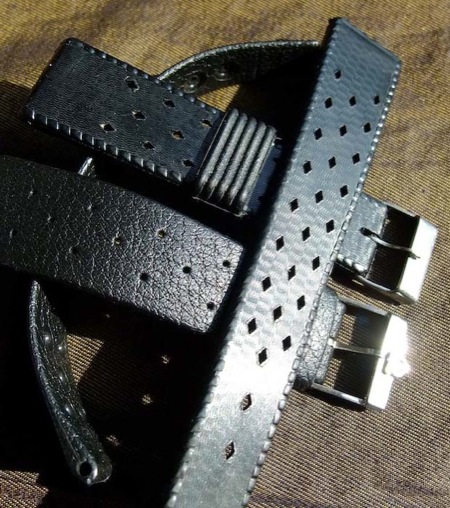


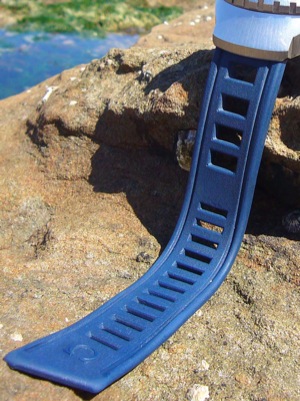


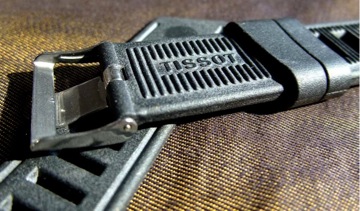


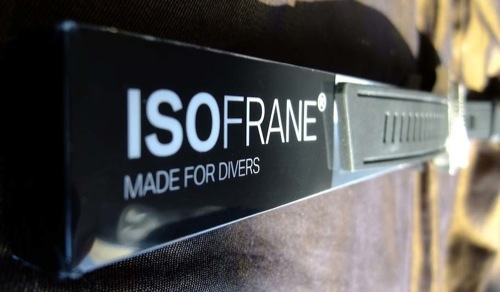


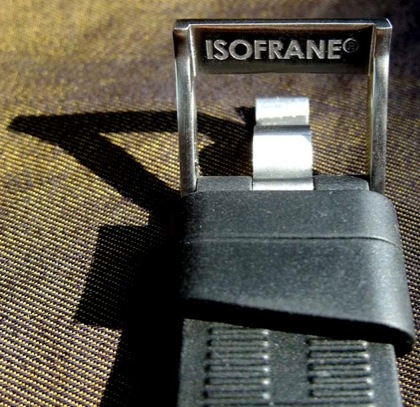

Many straps have missing keepers. Owners removing one of the keepers early on as the second was thought not to be required. They are made from the same grippy rubber and were never the easiest to thread. Due to that a single keeper is quite sufficient to secure the strap tail.






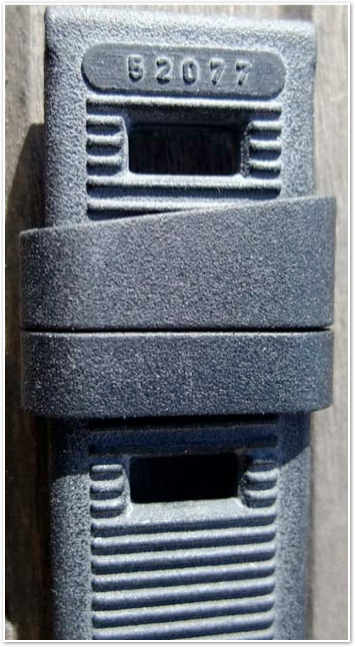

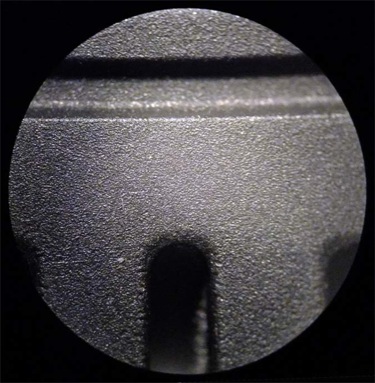


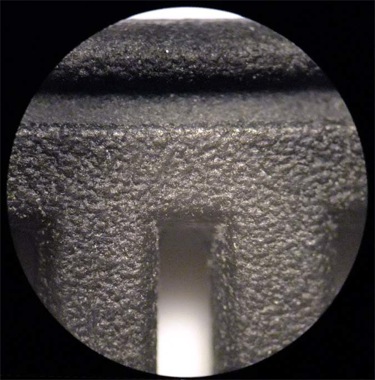


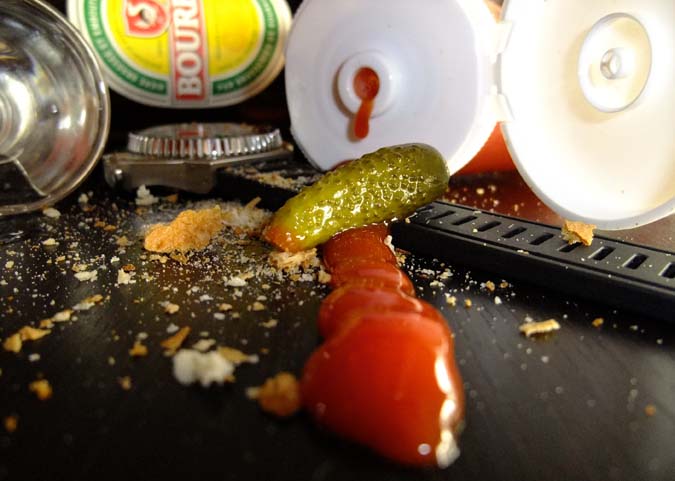





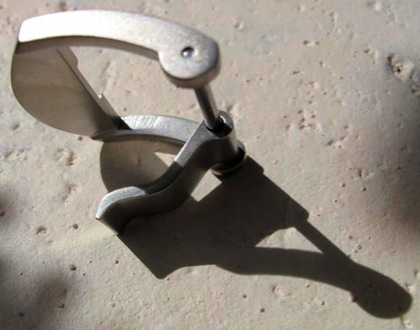


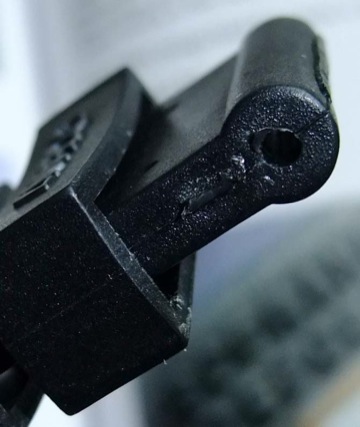


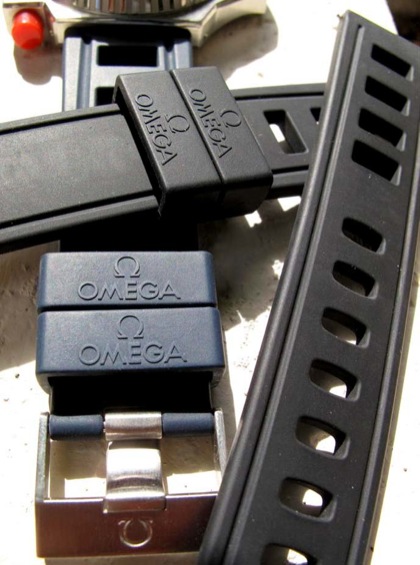





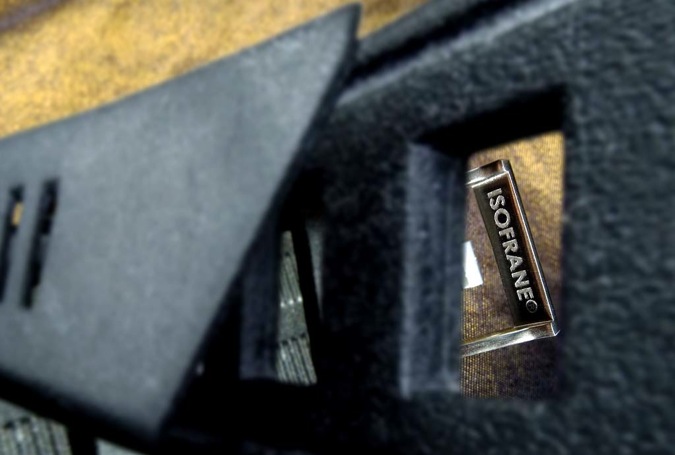


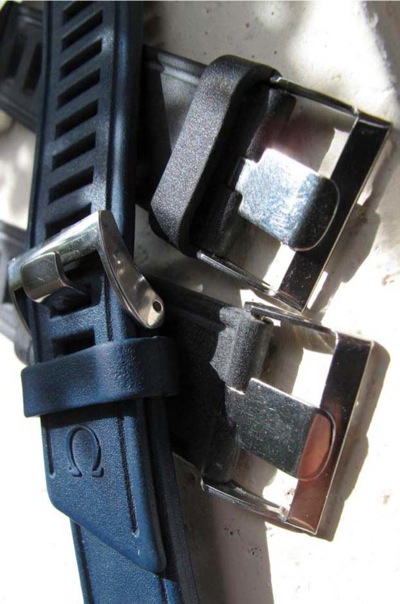

In addition to simply reviewing the strap, being able to wear them allowed the team to answer the two questions on everyone's lips:
1, Is this strap a worthy successor to its iconic ancestor?
2, Is this the best rubber strap for everyday wear?



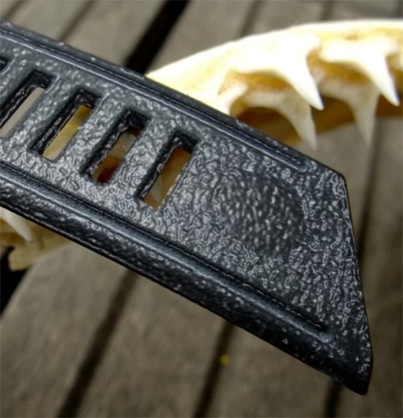

The temptation when water doesn't rid the strap of the grime is to use a proprietary cleaning product, many of which will ruin rubber products, blurring the fine details on these straps. Some divers perhaps using highly unsuitable chemicals like petrol or even paint thinners out in the field. Products such as solvents melting the surface smooth and others opening the pores of the rubber compound allowing trace ingredients to leach out, causing colour changes and allowing harmful chemicals to penetrate deeper and hasten the strap's demise. Its not unheard of to find examples with a polished aspect, attained due to surface melting by a chemical.
The overriding impression is that this is a strap you can trust.
Whilst the compound is grippy in nature, it does not pull arm hair or pinch skin and is child's-play to size for the wrist, locating the watch head exactly where wanted, just like the vintage Isofrane strap. And just like the original, fighting with the stretchy and grippy keepers is something you get for free!




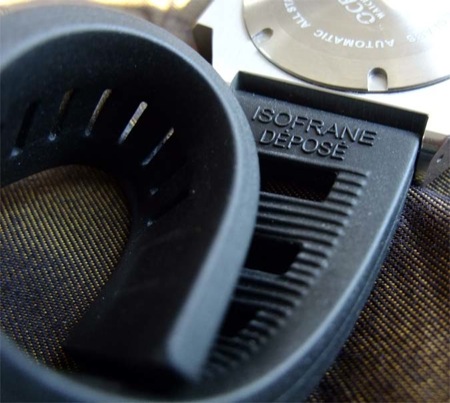





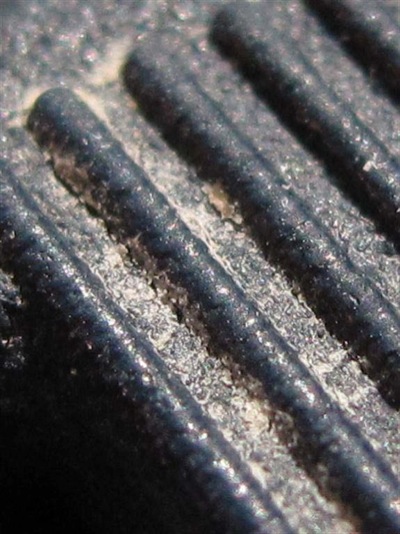

In summary, there is very little not to like about the new Isofrane 1968 strap. Not only is it a comfortable, well fitting, high quality strap, but it also provides an affordable alternative to both the more expensive OEM 'Isofrane-look' straps and the original vintage Isofranes.
The new straps not only possess the iconic design cues but most importantly wear as well as the original too.








